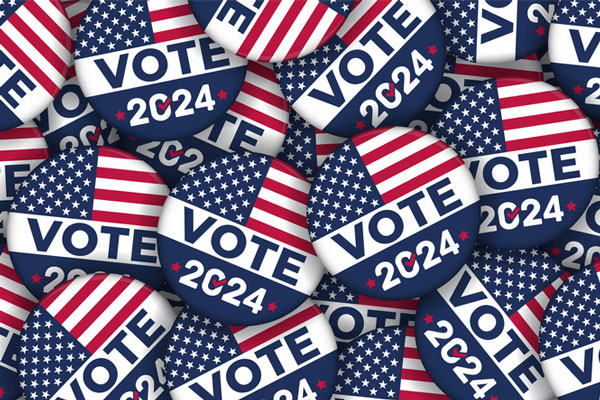Contributor: Steve Passwaiter, President, Silver Oak Political
The Opportunity:
We all know it. The projections are everywhere. Political ad experts are estimating spending ranging from $10 to $16 billion during the 2024 political cycle. A sizable portion of that will end up as part of what looks to be a rematch between our current and former president. However, there will be a lot to explore for media sellers in down-ballot races this year. A quick look at some recent races gives us a clue about what has changed and what awaits us.
Last year in Wisconsin, a State Supreme Court race totaled over $30 million in ad spending. The ideological control of the court was at stake in the election, and this election occurred not very long after SCOTUS (the U.S. Supreme Court) issued its ruling overturning Roe v. Wade in the Dobbs decision. This was a spending record for a State Supreme Court race in Wisconsin and portends richer spending on these races particularly in cases where control of the court is in play. A race in Pennsylvania last fall where control was not an issue generated about $20 million.
This past autumn, the Commonwealth of Virginia held legislative elections for its House of Delegates and State Senate. Republicans controlled the House of Delegates while Democrats controlled the State Senate. Margins were narrow in both Houses. With the responsibilities of deciding the boundaries of reproductive rights, there was a bitter fight between the parties that consumed Virginia media outlets. Vivvix/CMAG estimated that there was over $65 million spent statewide. One race in the exurbs of Northern Virginia brought spending of $7 million alone. It was quite amazing, but it is not the last time we’ll see this volume of activity in these what were once much quieter races.
Chances are quite good that your market(s) will have a substantial number of county and state legislative races this year and paying attention to those is an idea worth executing.
If you’re lucky enough to be in a state with one of the several key Senate races this year, be glad! Media outlets in Pennsylvania, Ohio, Michigan, Wisconsin, Montana, Nevada and Arizona will see record spending with normal media shares in place this year. If those shares aren’t to your liking, I’d suggest a quick look at the recent Nielsen study that highlights some creativity used in the last Senate race in the Keystone State. There’s some real inspiration to consider. Montana has already seen spending commitments of over $119 million. Ohio, where a Republican primary is nearing its conclusion, has seen spending around $80 million. Those figures are aggressive for late February.
The Challenge:
Every radio broadcaster knows the challenges in political ad pursuits. There are some facts out there that are hard to overcome. I say this gently, but politics is a video business. (Okay, that’s out there.) While that’s not easy to face, it’s not a death sentence. Indeed, there are places where radio has a definite role to play for political advertisers and it’s not just when the TV operators are sold out. If we know anything about advertising in the 21st century, it is how much it continues to evolve. Politics is not immune to those changes either. There is an ongoing reach challenge with linear TV. Every time a buyer goes back in to purchase time in the next cycle, there are fewer and fewer viewers there to see the ad. Getting reach is getting harder and more expensive. Again, I refer you to the recent Nielsen study that shows how one campaign was able to reach 12% more people for no added cost by allocating more radio to the package.
We all know that video is a first choice for a lot of advertisers, not just the political ones, but that shouldn’t stop radio sellers from pursuing these advertisers. We all know who they are, and you’ve convinced more than your share of nonpolitical advertisers that radio moves product.
Where can you have more influence with that data? Using it in Washington will have negligible immediate impact. The plans for radio are well established and unless you have a personal relationship with the candidate or cause in question, I doubt much can change that. Let’s be honest about that. It’s going to take a long-term effort by the leaders in the industry to make that kind of dent in D.C. I’d suggest that listener research and radio listeners studies could and should have more impact the closer to home you use them. Bring them along to talk to your local candidates in your markets – in a place where you’re better known and have more influence. Those of us that follow political ads are unanimous in our beliefs that spending time with these people, who are in your own backyard, will have greater rewards.
Radio has always had a creative streak. The key will be to shift misperceptions about radio to promote participation in the 2024 election. What simple elements can you add to your on-air broadcasts to promote early voting deadlines and voter registration? If you’re making a point of doing that, don’t be silent about it and do remind your local candidates that you’re a partner in the promotion of good citizenship. If you have a news/talk format, how about hosting a debate and streaming it? If you are a music format, why not have candidates call in to speak to the on-air personalities. (I’m dipping a bit into the execution piece here but how about it?) Think about the promotions that are run specifically to attract advertisers to your properties. What makes political advertisers any different? Nothing, really.
Next week, in the second part of this post, I will delve further into the execution.


